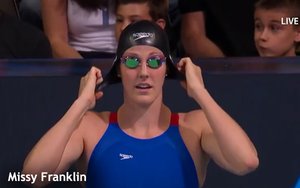
Local TV market Olympic programming posted sharp gains -- with hometown Olympic athletes grabbing even better results for their respective TV stations.
For the entire
Olympics, overall prime-time household viewing grew 356% over regular-season July prime-time programming for those stations with home market Olympics athletes. Non-home athlete Olympic stations rose
315%, looking at all metered markets.
Katz Media Group's many major TV stations witnessed even higher spikes in viewing on specific days when those athletes competed.
Tampa, for the
NBC affiliate (WFLA), was up an average 747% for the August event over its July 2016 regular season prime time, in which its home market athletes had events in prime time. Providence (WJAR) had a 743%
gain; Washington, DC (WRC), 596%; San Francisco (KNTV), 571%; and Minneapolis (KARE), 538%.
advertisement
advertisement
Looking at specific days, the numbers could be even higher: Miami (WTVJ) grew 1450% on one night;
San Francisco (KNTV), 1429%; Columbus, OH (WCMH), 1371%; and Los Angeles (KNBC), up 1260%.
Overall for the 17 days of Olympic programming, Salt Lake City posted the highest average household
viewing data with a Nielsen 20.4 rating/39 share. Denver, 19.1/38; Indianapolis, 18.1/31; Austin, 18.0/33; and Columbus, OH., 17.8/31.
Salt Lake City had six athletes competing -- including
Jared Ward, long-distance runner and volleyball player Jake Gibb. Denver had 18 local athletes, including five-time gold medalist Missy Franklin. Indianapolis had 12 with gold medalist Amanda Elmore
in rowing and Steele Johnson in synchronized diving.
Stacey Schulman, EVP of strategy, analytics and research for Katz, said the research tracked every athlete, mapped back to their home
markets, then compared the audience delivery on nights they competed against prior pre-Olympic weeks in July.